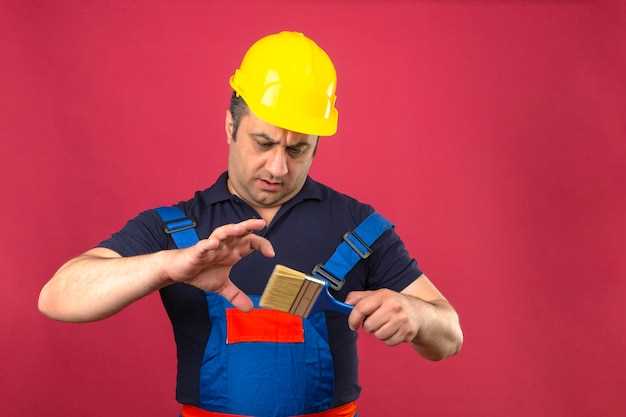
When it comes to achieving a flawless paint job, even the smallest misstep can lead to disastrous results. The joy of a freshly painted surface can quickly turn into frustration if common mistakes are made during the process. One of the primary issues homeowners and DIY enthusiasts face is fading, which can diminish the vibrancy of your chosen color over time. This not only affects the overall aesthetic appeal but can also impact the longevity of the paint itself.
Another frequent error is the notorious swirl marks that often mar an otherwise perfect finish. These imperfections typically arise from improper application techniques, insufficient preparation, or the wrong tools. Understanding these pitfalls is crucial to ensuring that your paint job not only looks great initially but also stands the test of time, resisting the wear and tear of everyday life.
In this article, we will delve deeper into the most common mistakes that can ruin your paint job, offering practical solutions to help you achieve a stunning, professional-looking finish. By addressing these issues head-on, you can transform your painting project into a success rather than a source of regret.
Choosing the Wrong Type of Paint for Your Project
One of the most critical aspects of achieving a flawless paint job is selecting the right type of paint for your specific project. Using the wrong paint can lead to significant issues, including fading and an undesirable finish characterized by swirl marks. Below are key considerations to keep in mind when choosing paint:
- Interior vs. Exterior Paint: Always differentiate between interior and exterior paints. Interior paints are formulated to resist wear and tear within a controlled environment, while exterior paints are designed to withstand varying weather conditions.
- Finish Type: The finish of the paint can drastically affect the final look. Options include matte, eggshell, satin, semi-gloss, and gloss. For high-traffic areas, a semi-gloss or gloss finish can provide better durability and ease of cleaning.
- Paint Base: Water-based paints dry quickly and have lower levels of volatile organic compounds (VOCs), making them safer for indoor use. Oil-based paints offer a smoother finish but take longer to dry and can cause fading over time.
- Color Quality: Not all paints provide the same color saturation. Low-quality paints may lead to a dull appearance and increase the likelihood of fading which diminishes the overall look of your project.
To avoid common mistakes, consider the following steps:
- Assess the environment where the paint will be applied. Take into account humidity, temperature fluctuations, and exposure to sunlight.
- Read product labels carefully. Ensure the paint is formulated for your intended surface and conditions.
- Ask for samples to see how the paint looks once applied. This can help prevent surprises related to fading and finishes.
- Consult experts or professionals if unsure about your choices. Their experience can guide you in selecting the appropriate paint for optimal results.
Making the right choice of paint is essential for ensuring a beautiful, durable finish on your project. Avoiding mistakes related to paint selection can save time, money, and effort in achieving a professional-looking result.
Neglecting Proper Surface Preparation Techniques

One of the most critical steps in achieving a flawless paint job is adequate surface preparation. Neglecting this phase can lead to a multitude of issues, including fading and visible marks that diminish the overall appearance of your work.
Failure to clean the surface properly can trap dirt, grease, and dust. These contaminants can cause the paint to adhere poorly, leading to bubbling or flaking over time. To ensure an optimal bond, it is essential to wash the surface thoroughly, removing any particles that may interfere with the painting process.
Moreover, sanding is often overlooked but is a necessary technique for creating a smooth base. Skipping this step can result in an uneven finish, as the paint will accentuate any imperfections present on the surface. Sanding not only provides a better texture but also helps in removing old paint marks, contributing to a more uniform application.
Additionally, applying a primer is crucial, especially on raw or previously painted surfaces. Primer acts as a barrier that enhances paint adhesion and offers additional protection against fading. Without it, the top coat may not last as long and can lead to discoloration over time.
In conclusion, proper surface preparation is essential to prevent fading and marks that can ruin your paint job. Investing time in cleaning, sanding, and priming will pay off in the longevity and quality of your finished product.
Improper Application Methods Leading to Swirl Marks

One of the most frustrating issues that can arise during a paint job is the appearance of swirl marks. These unsightly imperfections often result from improper application techniques. Understanding how to avoid these mistakes is crucial for achieving a flawless finish.
Using the wrong tools is a primary culprit for swirl marks. For instance, applying paint with a low-quality brush or roller can introduce micro-abrasions on the surface, leading to unwanted patterns. It’s advisable to select high-quality applicators designed specifically for the type of paint you are using.
Another major factor is the technique of application. A common mistake is applying paint too quickly or with excessive pressure. This can disturb the paint layer, creating swirls as the material doesn’t adhere properly. Instead, employ a smooth, even stroke, allowing the paint to flow naturally without rushing the process.
Additionally, working with inadequate surface preparation exacerbates the risk of swirl marks. Failing to sand or clean the surface properly can lead to uneven paint adhesion, allowing imperfections to show through. Always ensure surfaces are well-prepped and free of dust or debris prior to painting.
Temperature and humidity levels during application also play a critical role. If paint is applied under unfavorable conditions, it can dry too quickly, creating uneven textures that manifest as swirl marks. Aim for moderate temperature and humidity for optimal results.
In summary, avoiding swirl marks involves careful consideration of tools, application techniques, surface preparation, and environmental factors. By taking these elements into account, you can achieve a smoother finish and dramatically enhance the overall quality of your paint job.






